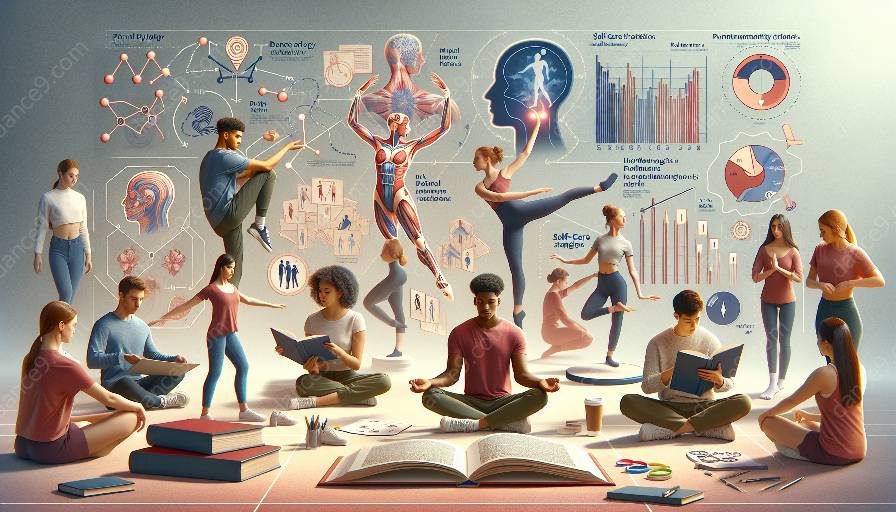As dance education evolves, there is a growing recognition of the benefits of incorporating mindfulness practices. This article explores the significant advantages of integrating mindfulness into dance education and its positive impact on self-care strategies and physical and mental health in dance.
Mindfulness in Dance Education
Incorporating mindfulness practices in dance education involves cultivating a present-moment awareness of body, breath, movement, and emotions. This heightened awareness enhances the dancer's ability to connect deeply with their art and promotes a harmonious union of mind, body, and spirit.
The Benefits
1. Emotional Regulation: Mindfulness practices equip dancers with tools to manage and regulate their emotions effectively, leading to enhanced emotional well-being and resilience.
2. Stress Reduction: By engaging in mindfulness, dancers learn to manage performance anxiety, reduce stress levels, and maintain a sense of calmness during high-pressure situations.
3. Enhanced Focus and Concentration: Mindfulness training fosters improved attention and concentration, allowing dancers to immerse themselves fully in their movements and performances.
4. Improved Body Awareness: By honing their mindfulness skills, dancers develop a heightened sense of body awareness, leading to better alignment, posture, and injury prevention.
5. Self-Care and Well-being: The incorporation of mindfulness practices encourages a culture of self-care and well-being within the dance community, emphasizing the importance of mental and physical health.
Mindfulness and Self-Care Strategies
The integration of mindfulness practices aligns seamlessly with self-care strategies in dance. It empowers dancers to prioritize their well-being, leading to a more balanced and sustainable dance practice. Mindfulness enables dancers to tune into their bodies, identify their needs, and practice self-compassion.
Mindfulness and Physical Health in Dance
Physical health in dance is paramount, and mindfulness plays a pivotal role in supporting dancers' physical well-being. By promoting mindful movement and alignment, dancers can prevent injuries, enhance flexibility, and cultivate a deeper understanding of their physical capabilities.
Mindfulness and Mental Health in Dance
The mental health of dancers is equally important, and mindfulness practices contribute to fostering a positive mental state. By developing resilience, managing performance pressures, and promoting self-awareness, dancers can nurture their mental health and overall well-being.
Conclusion
Incorporating mindfulness practices in dance education offers a myriad of benefits, ranging from improved emotional regulation and stress reduction to enhanced focus, body awareness, and overall well-being. By integrating mindfulness into dance education, dancers can attain a deeper connection with their art form and prioritize their self-care, ultimately leading to a healthier and more sustainable dance practice.


































